Most Effective Antihistamines: Comparing Zyrtec, Claritin, and Alternatives for Allergy Relief
What are the key differences between popular antihistamines. How do Zyrtec and Claritin compare in effectiveness and side effects. Which antihistamine works fastest for allergy symptoms. How do second-generation antihistamines differ from first-generation options.
Understanding Antihistamines: How They Work to Relieve Allergy Symptoms
Antihistamines are a class of medications widely used to treat allergy symptoms. They work by blocking the effects of histamine, a chemical released by the immune system during an allergic reaction. When histamine is blocked, allergy symptoms like sneezing, runny nose, itchy eyes, and skin reactions are reduced.
There are two main types of antihistamines:
- First-generation antihistamines (e.g. Benadryl) – These older medications often cause drowsiness
- Second-generation antihistamines (e.g. Zyrtec, Claritin) – Newer options that are less likely to cause drowsiness
Second-generation antihistamines like Zyrtec and Claritin have become popular choices for daily allergy relief due to their long-lasting effects and reduced side effects compared to older options.
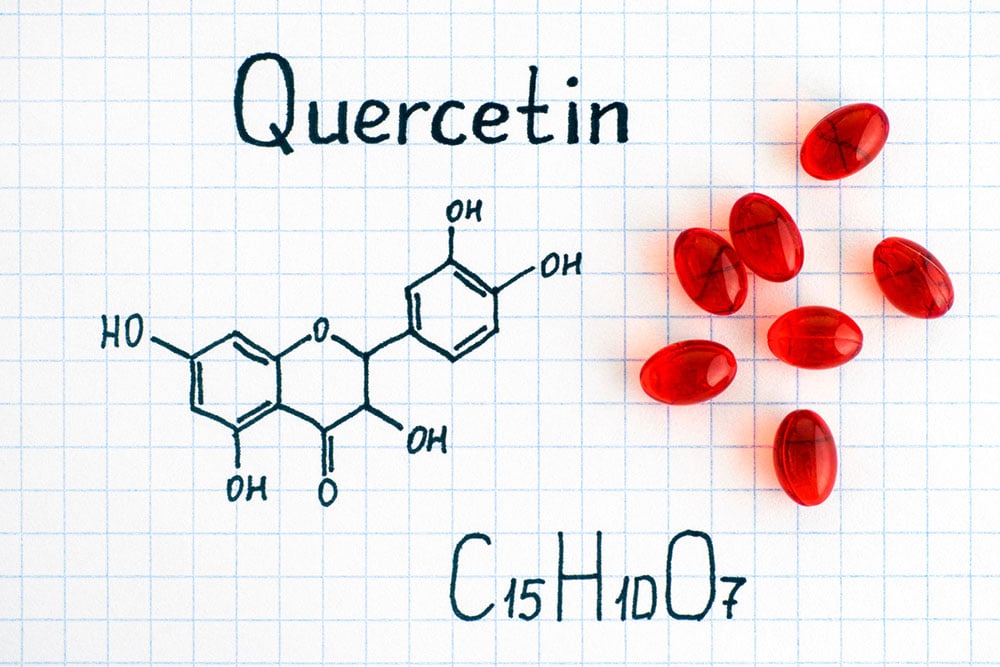
Zyrtec vs Claritin: Comparing Two Popular Antihistamine Brands
Zyrtec (cetirizine) and Claritin (loratadine) are two of the most widely used over-the-counter antihistamines. While they work in similar ways, there are some key differences to consider:
Active Ingredients
The active compounds in these medications differ:
- Zyrtec contains cetirizine hydrochloride
- Claritin contains loratadine
Despite having different active ingredients, studies have not shown one to be clearly more effective than the other for most people.
Onset of Action
How quickly do these antihistamines take effect? Research indicates that both Zyrtec and Claritin are absorbed into the bloodstream within 1-2 hours of ingestion. However, some individuals report that Zyrtec seems to work faster for them.
Duration of Effect
Both medications provide 24-hour relief from allergy symptoms with a single daily dose. This long-lasting effect makes them convenient options for managing chronic allergy symptoms.
Drowsiness and Side Effects
As second-generation antihistamines, both Zyrtec and Claritin are less likely to cause drowsiness compared to older options. However, Zyrtec’s labeling does caution against operating vehicles or machinery after use, suggesting it may have a slightly higher risk of drowsiness for some individuals.

Exploring Other Antihistamine Options: Allegra and Benadryl
While Zyrtec and Claritin are popular choices, other antihistamine brands offer unique benefits:
Allegra (fexofenadine)
- Second-generation antihistamine
- Non-sedating formula
- Effective for 24 hours
Allegra is another popular option for those seeking long-lasting, non-drowsy allergy relief. Its active ingredient, fexofenadine, is less likely to cause drowsiness than some other antihistamines.
Benadryl (diphenhydramine)
- First-generation antihistamine
- Faster-acting than second-generation options
- More likely to cause drowsiness
- Better for acute allergic reactions and skin symptoms
Benadryl is an older antihistamine that acts quickly to relieve allergy symptoms. However, its sedating effects make it less suitable for daily use compared to newer options.
Choosing the Right Antihistamine: Factors to Consider
When selecting an antihistamine, several factors can influence which option is best for you:
- Type of allergies (seasonal, year-round, or acute reactions)
- Severity of symptoms
- Desired onset of action
- Potential for drowsiness or other side effects
- Interactions with other medications
- Personal response to different active ingredients
Consulting with a healthcare provider can help determine the most appropriate antihistamine for your specific needs and medical history.

Potential Side Effects and Safety Considerations of Antihistamines
While generally safe for most people, antihistamines can cause side effects in some individuals. Common side effects may include:
- Drowsiness or fatigue
- Dry mouth
- Headache
- Dizziness
- Nausea
Is there a difference in side effect profiles between Zyrtec and Claritin? While both medications are generally well-tolerated, some individuals may experience different side effects with each:
- Zyrtec may be more likely to cause drowsiness in some people
- Claritin may have a higher potential for drug interactions due to its metabolism in the liver
People with severe liver conditions should exercise caution when using Claritin, as the liver is responsible for breaking down loratadine. Zyrtec, on the other hand, is primarily excreted unchanged through the kidneys, potentially making it a safer option for those with liver concerns.
Maximizing the Effectiveness of Antihistamines
To get the most benefit from antihistamine medications, consider the following tips:
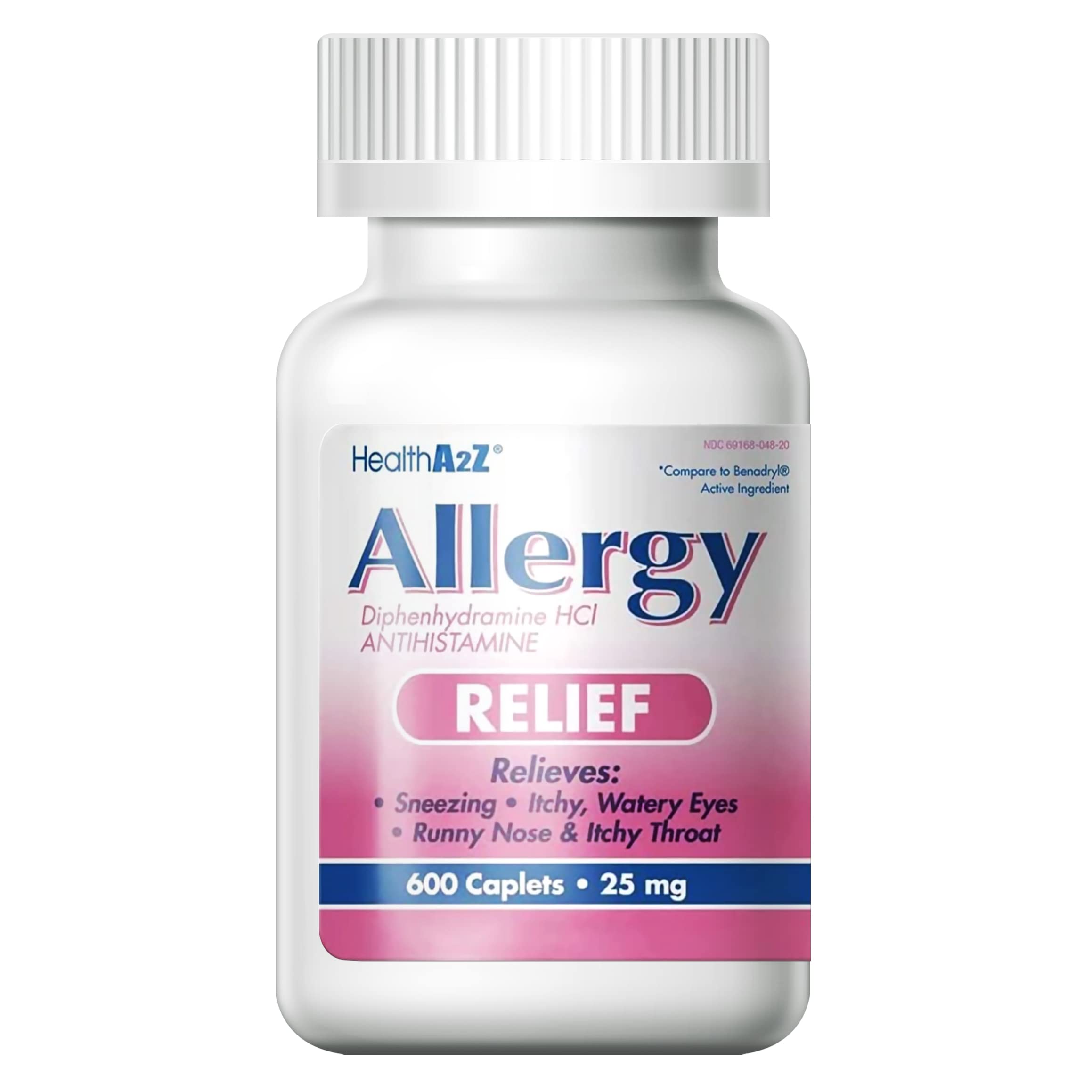
- Take the medication at the same time each day for consistent relief
- For seasonal allergies, start taking antihistamines before allergy season begins
- Avoid alcohol and other sedating substances when using antihistamines
- Be patient – it may take several days of regular use to experience maximum benefit
- Combine antihistamines with other allergy management strategies, such as nasal sprays or environmental controls
Can antihistamines be used long-term? Many second-generation antihistamines are considered safe for long-term use. However, it’s always best to consult with a healthcare provider about extended use of any medication.
Beyond Antihistamines: Complementary Approaches to Allergy Management
While antihistamines can provide significant relief from allergy symptoms, a comprehensive approach to allergy management may include additional strategies:
- Nasal corticosteroid sprays for reducing inflammation
- Saline nasal irrigation to flush out allergens
- Allergen immunotherapy (allergy shots or sublingual tablets)
- Environmental controls to reduce exposure to allergens
- Natural remedies like local honey or herbal supplements (consult a healthcare provider before use)
How can environmental controls complement antihistamine use? Reducing exposure to allergens through measures like using air purifiers, keeping windows closed during high pollen days, and regularly cleaning bedding can enhance the effectiveness of antihistamine medications.

Antihistamines for Specific Populations: Children, Elderly, and Pregnant Women
The safety and efficacy of antihistamines can vary for different groups:
Children
Many second-generation antihistamines are approved for use in children, but dosages may differ. Always follow age-specific guidelines and consult a pediatrician before giving antihistamines to children.
Elderly
Older adults may be more sensitive to the side effects of antihistamines, particularly first-generation options. Second-generation antihistamines are often preferred for this population due to their reduced risk of drowsiness and cognitive impairment.
Pregnant and Breastfeeding Women
The safety of antihistamines during pregnancy and breastfeeding should be discussed with a healthcare provider. Some antihistamines may be considered safer than others for use during pregnancy.
Are there special considerations for using antihistamines in these populations? Dosage adjustments, monitoring for side effects, and choosing the most appropriate type of antihistamine are important factors to consider for children, elderly individuals, and pregnant or breastfeeding women.

The Future of Antihistamine Research and Development
Ongoing research in the field of allergy treatment continues to explore new antihistamine formulations and alternative approaches to managing allergies. Some areas of focus include:
- Development of antihistamines with even fewer side effects
- Combination therapies that target multiple aspects of allergic reactions
- Novel delivery methods for antihistamines, such as long-acting injections or implants
- Personalized medicine approaches to match individuals with the most effective antihistamine for their unique physiology
What advancements can we expect in antihistamine treatments? Future developments may lead to more targeted therapies, reduced side effects, and improved quality of life for allergy sufferers. Continued research may also uncover new insights into the mechanisms of allergic reactions, potentially leading to more effective prevention strategies.
In conclusion, while Zyrtec and Claritin remain popular and effective options for many allergy sufferers, the choice of antihistamine should be based on individual factors and preferences. By understanding the differences between available options and considering personal needs, allergy sufferers can work with healthcare providers to find the most effective antihistamine regimen for their symptoms. As research in this field progresses, we can look forward to even more advanced and personalized approaches to allergy management in the future.
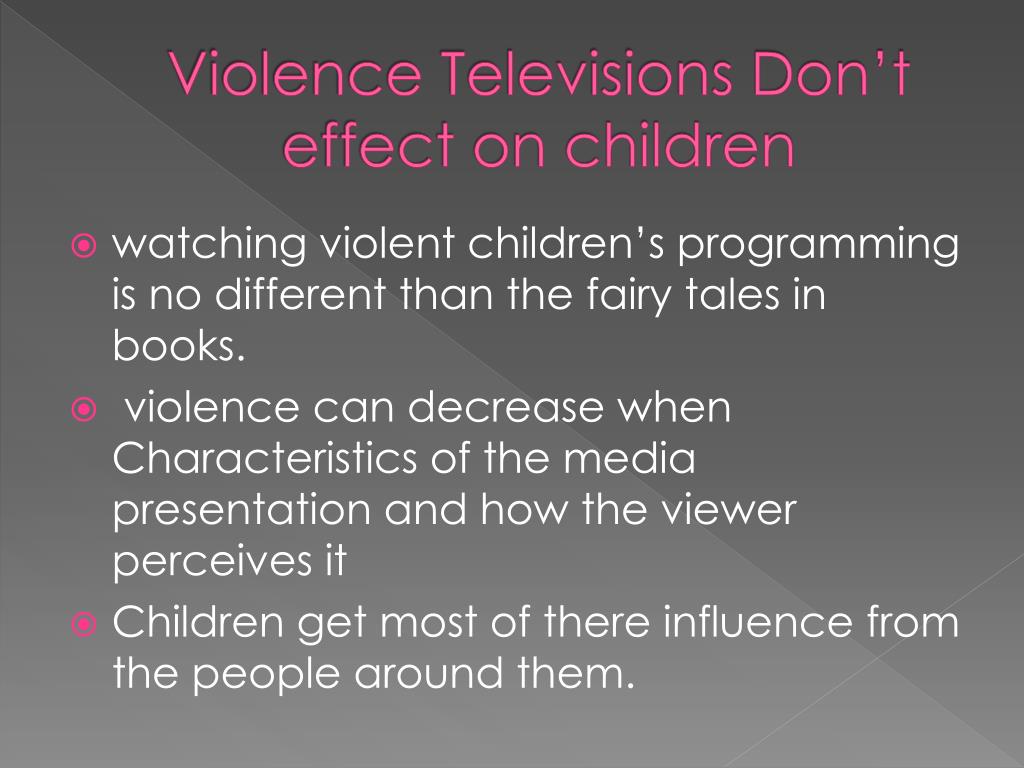
What is the best antihistamine for allergies?
We include products we think are useful for our readers. If you buy through links on this page, we may earn a small commission Here’s our process.
Medical News Today only shows you brands and products that we stand behind.
Our team thoroughly researches and evaluates the recommendations we make on our site. To establish that the product manufacturers addressed safety and efficacy standards, we:
- Evaluate ingredients and composition: Do they have the potential to cause harm?
- Fact-check all health claims: Do they align with the current body of scientific evidence?
- Assess the brand: Does it operate with integrity and adhere to industry best practices?
We do the research so you can find trusted products for your health and wellness.
Read more about our vetting process.
Was this helpful?
Many people use antihistamines to treat allergy symptoms. Zyrtec (cetirizine) and Claritin (loratidine) are two popular brands. They contain different compounds but appear to be equally effective.
Zyrtec (cetirizine) and Claritin (loratidine) are two popular brands. They contain different compounds but appear to be equally effective.
Antihistamines can reduce allergy symptoms, such as watering eyes, itchy skin, hives, and swelling. They may also help with dermatitis or even mosquito bites, but manufacturers usually market them for specific allergies.
Zyrtec is a brand name for the drug cetirizine. Claritin is the brand name for loratidine. Zyretc and Claritin are in the same class of medications. Both are second-generation antihistamines, and they generally work the same way in the body. Neither is clearly better than the other.
In this article, we provide detail about the differences between Zyrtec and Claritin. We also compare them to two other popular brands of antihistamines: Benadryl and Allegra.
Share on PinterestPeople can purchase Zyrtec and Claritin without prescription. They are available as pills, chewable tablets, and syrups.
Zyrtec and Claritin are brand-name medications that people can buy over the counter. They are available in various forms, including pills, chewable tablets, and syrups.
They are available in various forms, including pills, chewable tablets, and syrups.
Regardless of marketing claims, little scientific evidence shows that either is more effective.
Active ingredients
Zyrtec and Claritin have different active compounds.
Zyrtec contains cetirizine hydrochloride, also called cetirizine HCL, while Claritin contains loratadine.
Drowsiness
Zyrtec and Claritin are second-generation antihistamines. They are less likely to make a person feel drowsy or otherwise affect alertness than older, first-generation antihistamines.
The labeling of Zyrtec says that a person should not take it when driving a vehicle or using machinery. People should avoid taking Zyrtec with alcohol or other medicines that could cause drowsiness.
Timescales
Zyrtec and Claritin are effective for about 24 hours. A person should only take one dose per day. The body absorbs both antihistamines quickly, but Zyrtec seems to work faster for some people.
A 2014 study found that both drugs were absorbed into the bloodstream within 1–2 hours of taking the medication.
Researchers are often studying, comparing, and improving antihistamines. Other popular brands on the market today are Allegra and Benadryl.
- Allegra contains the active ingredient fexofenadine. Allegra is non-sedating, so it should not make a person feel drowsy. Allegra is also a second-generation antihistamine.
- Benadryl contains the active ingredient diphenhydramine. This acts faster than the other three and aims to treat minor skin reactions, not seasonal allergies. Benadryl is a first-generation antihistamine, which makes it sedating, so people tend to feel drowsy after taking it.
When a person comes into contact with an allergen, their immune system reacts and produces a chemical called histamine.
Histamine causes many allergy symptoms, including inflammation of the skin or sinuses, pain, redness, and wheezing.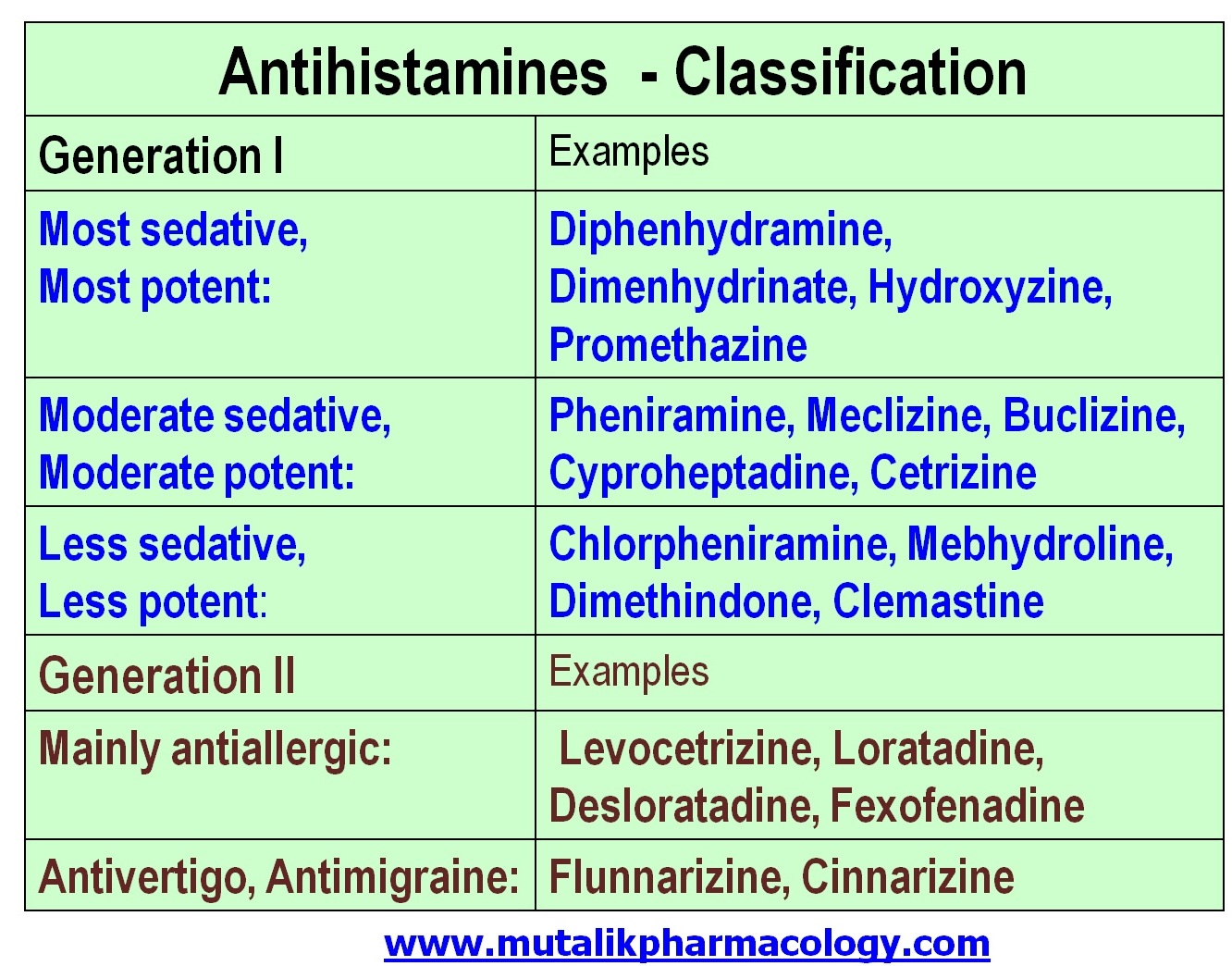
Immune responses also encourage extra mucus to develop, which helps to clear allergens from the nose and throat.
Allergy medications block histamine responses. This dulls the body’s response to minor or harmless allergens, such as pollen, dust, and pet dander.
Share on Pinterest Zyrtec and Claritin are safe for most people with minor allergies, but side effects can include headaches and dizziness.
Claritin and Zyrtec are effective and safe for most people with minor allergies. However, as with all medications, there may be some side effects.
Loratadine—present in Claritin—may not be safe for people with severe liver conditions. The liver has to break down loratadine. The kidneys break down cetirizine—found in Zyrtec—and the body excretes it in the urine, largely unchanged.
Claritin is more likely to interact with other drugs than Zyrtec. Claritin is broken down in the liver by enzymes that other drugs can inhibit. This may lead to Claritin building up in the body, which increases the risk of side effects.
Everyone reacts to medications differently, but Claritin and Zyrtec may have the following side effects:
- drowsiness, which is more likely when taking Zyrtec than Claritin
- a headache
- dizziness or light-headedness
- a sore throat
- dry mouth
- constipation or diarrhea
- abdominal cramps and pain
- eye redness
Some people experience a severe allergic response called anaphylaxis after taking antihistamines. A person should seek emergency medical attention if any of the following symptoms are present:
- hives
- a swollen throat
- swollen lips or face
- trouble breathing or other respiratory symptoms
- a racing heartbeat
Some antihistamines are safe for children, but it is a good idea to talk with a doctor or check the label carefully before giving antihistamines to a child.
In 2012, a review found that some antihistamines may be problematic during pregnancy. However, the authors noted that there was no evidence linking cetirizine or loratidine to birth defects.
A study published in 2014 noted that 10–15 percent of women use antihistamines during pregnancy. Most appear to be safe, but some may have adverse effects.
The Centers for Disease Control and Prevention (CDC) urge people to ask a doctor before using an antihistamine or any other drug during pregnancy.
Claritin and Zyrtec are popular over-the-counter antihistamines. Doctors consider them safe and effective treatments for minor allergies.
Both are second-generation antihistamines. These cause less drowsiness than first-generation antihistamines.
No research has concluded that Zyrtec or Claritin is more effective, but some people report better responses with one or the other. The slight differences between the two may make one drug more appropriate for some people.
People can purchase Zyrtec, Claritin, and other popular brands without a prescription from supermarkets, pharmacies, and online stores.
What is the best antihistamine for allergies?
We include products we think are useful for our readers. If you buy through links on this page, we may earn a small commission Here’s our process.
If you buy through links on this page, we may earn a small commission Here’s our process.
Medical News Today only shows you brands and products that we stand behind.
Our team thoroughly researches and evaluates the recommendations we make on our site. To establish that the product manufacturers addressed safety and efficacy standards, we:
- Evaluate ingredients and composition: Do they have the potential to cause harm?
- Fact-check all health claims: Do they align with the current body of scientific evidence?
- Assess the brand: Does it operate with integrity and adhere to industry best practices?
We do the research so you can find trusted products for your health and wellness.
Read more about our vetting process.
Was this helpful?
Many people use antihistamines to treat allergy symptoms. Zyrtec (cetirizine) and Claritin (loratidine) are two popular brands. They contain different compounds but appear to be equally effective.
Antihistamines can reduce allergy symptoms, such as watering eyes, itchy skin, hives, and swelling. They may also help with dermatitis or even mosquito bites, but manufacturers usually market them for specific allergies.
Zyrtec is a brand name for the drug cetirizine. Claritin is the brand name for loratidine. Zyretc and Claritin are in the same class of medications. Both are second-generation antihistamines, and they generally work the same way in the body. Neither is clearly better than the other.
In this article, we provide detail about the differences between Zyrtec and Claritin. We also compare them to two other popular brands of antihistamines: Benadryl and Allegra.
Share on PinterestPeople can purchase Zyrtec and Claritin without prescription. They are available as pills, chewable tablets, and syrups.
Zyrtec and Claritin are brand-name medications that people can buy over the counter. They are available in various forms, including pills, chewable tablets, and syrups.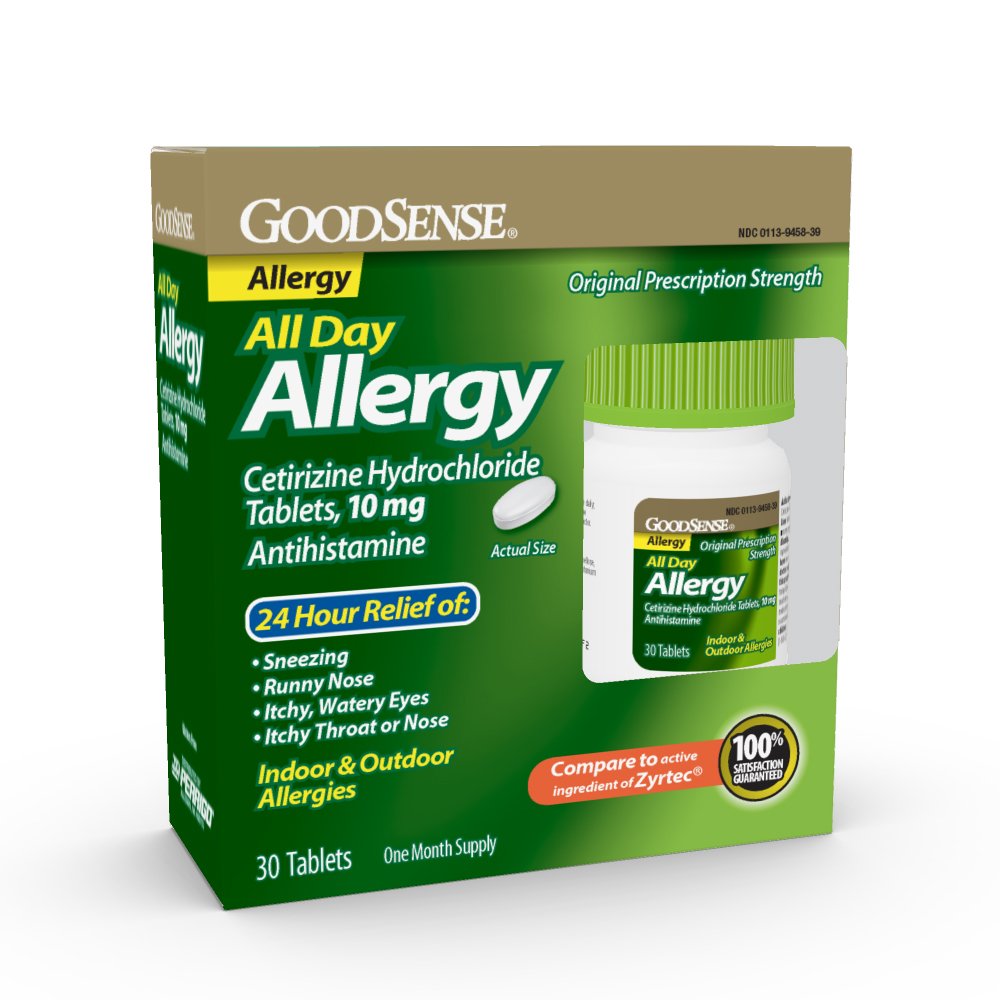
Regardless of marketing claims, little scientific evidence shows that either is more effective.
Active ingredients
Zyrtec and Claritin have different active compounds.
Zyrtec contains cetirizine hydrochloride, also called cetirizine HCL, while Claritin contains loratadine.
Drowsiness
Zyrtec and Claritin are second-generation antihistamines. They are less likely to make a person feel drowsy or otherwise affect alertness than older, first-generation antihistamines.
The labeling of Zyrtec says that a person should not take it when driving a vehicle or using machinery. People should avoid taking Zyrtec with alcohol or other medicines that could cause drowsiness.
Timescales
Zyrtec and Claritin are effective for about 24 hours. A person should only take one dose per day. The body absorbs both antihistamines quickly, but Zyrtec seems to work faster for some people.
A 2014 study found that both drugs were absorbed into the bloodstream within 1–2 hours of taking the medication.
Researchers are often studying, comparing, and improving antihistamines. Other popular brands on the market today are Allegra and Benadryl.
- Allegra contains the active ingredient fexofenadine. Allegra is non-sedating, so it should not make a person feel drowsy. Allegra is also a second-generation antihistamine.
- Benadryl contains the active ingredient diphenhydramine. This acts faster than the other three and aims to treat minor skin reactions, not seasonal allergies. Benadryl is a first-generation antihistamine, which makes it sedating, so people tend to feel drowsy after taking it.
When a person comes into contact with an allergen, their immune system reacts and produces a chemical called histamine.
Histamine causes many allergy symptoms, including inflammation of the skin or sinuses, pain, redness, and wheezing.
Immune responses also encourage extra mucus to develop, which helps to clear allergens from the nose and throat.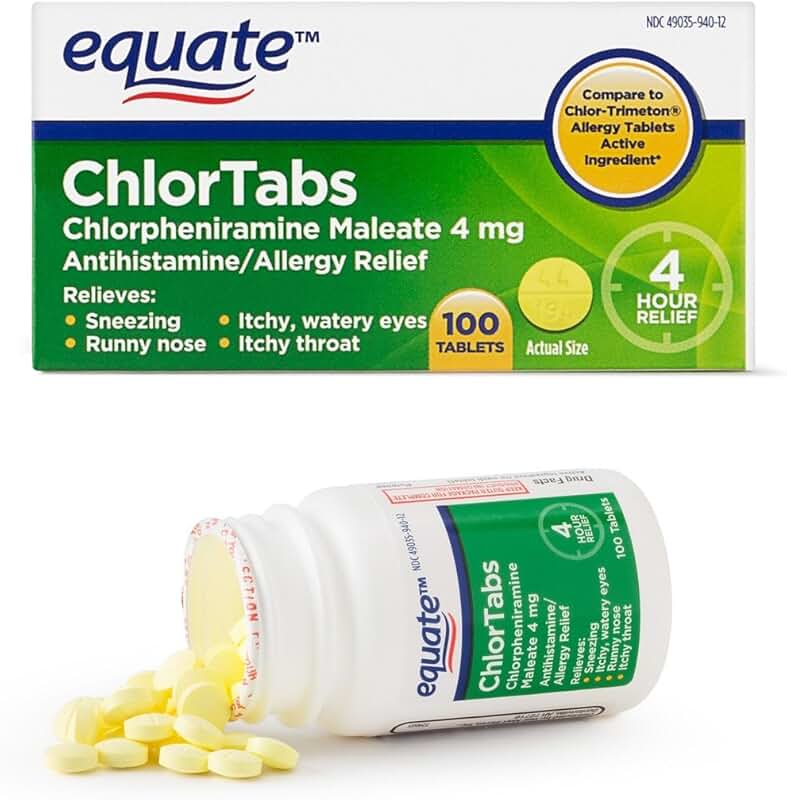
Allergy medications block histamine responses. This dulls the body’s response to minor or harmless allergens, such as pollen, dust, and pet dander.
Share on Pinterest Zyrtec and Claritin are safe for most people with minor allergies, but side effects can include headaches and dizziness.
Claritin and Zyrtec are effective and safe for most people with minor allergies. However, as with all medications, there may be some side effects.
Loratadine—present in Claritin—may not be safe for people with severe liver conditions. The liver has to break down loratadine. The kidneys break down cetirizine—found in Zyrtec—and the body excretes it in the urine, largely unchanged.
Claritin is more likely to interact with other drugs than Zyrtec. Claritin is broken down in the liver by enzymes that other drugs can inhibit. This may lead to Claritin building up in the body, which increases the risk of side effects.
Everyone reacts to medications differently, but Claritin and Zyrtec may have the following side effects:
- drowsiness, which is more likely when taking Zyrtec than Claritin
- a headache
- dizziness or light-headedness
- a sore throat
- dry mouth
- constipation or diarrhea
- abdominal cramps and pain
- eye redness
Some people experience a severe allergic response called anaphylaxis after taking antihistamines. A person should seek emergency medical attention if any of the following symptoms are present:
A person should seek emergency medical attention if any of the following symptoms are present:
- hives
- a swollen throat
- swollen lips or face
- trouble breathing or other respiratory symptoms
- a racing heartbeat
Some antihistamines are safe for children, but it is a good idea to talk with a doctor or check the label carefully before giving antihistamines to a child.
In 2012, a review found that some antihistamines may be problematic during pregnancy. However, the authors noted that there was no evidence linking cetirizine or loratidine to birth defects.
A study published in 2014 noted that 10–15 percent of women use antihistamines during pregnancy. Most appear to be safe, but some may have adverse effects.
The Centers for Disease Control and Prevention (CDC) urge people to ask a doctor before using an antihistamine or any other drug during pregnancy.
Claritin and Zyrtec are popular over-the-counter antihistamines. Doctors consider them safe and effective treatments for minor allergies.
Doctors consider them safe and effective treatments for minor allergies.
Both are second-generation antihistamines. These cause less drowsiness than first-generation antihistamines.
No research has concluded that Zyrtec or Claritin is more effective, but some people report better responses with one or the other. The slight differences between the two may make one drug more appropriate for some people.
People can purchase Zyrtec, Claritin, and other popular brands without a prescription from supermarkets, pharmacies, and online stores.
The most effective new generation allergy pills, which medicine is best
Publication date: 09/27/2021
THERE ARE CONTRAINDICATIONS. POSSIBLE SIDE EFFECTS. A SPECIALIST’S CONSULTATION IS REQUIRED. 0013
- Allergies
- Sun allergy
- Inexpensive but effective allergy pills
- New generation allergy pills
- Symptomatic medications
- Resources
Allergy is the reaction of the immune system to substances that usually do not harm a person (foods, drugs, plant pollen). But acting as an allergen, they provoke the production of antibodies, resulting in negative symptoms. Allergic reactions with varying degrees of manifestation occur at any age.
But acting as an allergen, they provoke the production of antibodies, resulting in negative symptoms. Allergic reactions with varying degrees of manifestation occur at any age.
You cannot get rid of pathology forever, but modern allergy pills allow you to reliably stop its symptoms and forget about the problem for a long time. However, before purchasing an antiallergic agent, you need to visit a doctor and establish the cause of the development of unpleasant symptoms.
Types of allergies
There are several types of allergies:
- Respiratory (respiratory) – some odors, dust, plant pollen cause allergic rhinitis, rhinosinusitis.
- Food – certain products lead to the development of a variety of manifestations: small isolated or more extensive, combined lesions of the gastrointestinal tract (GIT), skin, respiratory organs.
- Medicinal – drugs increase the sensitivity of the body and cause allergic symptoms.
- Insect – occurs when an insect bites or comes into contact with their waste products.

The most dangerous manifestation of allergy is anaphylactic shock. It develops in a matter of minutes in response to the ingestion of medicines, insect venom, blood products.
Some people develop negative symptoms when exposed to sunlight.
Sun allergy
Allergic effect of the sun is manifested by the interaction of ultraviolet rays with substances found on the skin or in the skin. In sensitive people, allergies occur when exposed to ultraviolet radiation on the skin, which has come into contact with the pollen of certain plants. Also, an allergic reaction can occur if creams, ointments, perfumes, deodorants are used before going outside. Often, sulfonamides, antibiotics, NSAIDs (non-steroidal anti-inflammatory drugs), statins become the cause of photodermatosis.
Photodermatosis manifests itself on the skin:
- redness and inflammation;
- peeling;
- itching and burning;
- rashes.

It is very important to identify the cause of the allergy and take the necessary measures at the initial stage of its occurrence. Advanced stages lead to the development of such serious pathologies as bronchial asthma, eczema, sinusitis.
Inexpensive but effective allergy pills
Two categories of drugs are used for treatment – antihistamines (eliminate the cause of the reaction) and symptomatic (help to remove the consequences of manifestations).
Antihistamines are medicines that prevent the release of histamine. It is this substance that excites cells to resist various external factors. There are already 3 generations of drugs, each of which has its own advantages and disadvantages.
I generation
These inexpensive products are used when you need a quick effect. But they are not used for long-term treatment. A significant drawback of these medicines is side effects, manifested by drowsiness, lethargy, and headache. Not recommended for pregnant and lactating mothers. The most famous drugs: Tavegil, Suprastin, Diphenhydramine.
Not recommended for pregnant and lactating mothers. The most famous drugs: Tavegil, Suprastin, Diphenhydramine.
II generation
These more modern drugs have virtually no sedative effect. With a frequency of admission 1 time per day, they can be taken up to 4 weeks. If the benefit exceeds the potential risk, pregnant women are allowed to take it. Zirtek, Loratadin-VERTEX, Claritin have proven themselves well. These preparations can be used even for children.
All products Suprastin
20 reviews
All products Zyrtec
3 reviews
All products Claritin
20 reviews
All products Tavegil
20 reviews
Allergy pills of new generation
Third generation drugs include fexofenadine or desloratadine. Thanks to these substances, they are not addictive, so you can take them for more than a month.
Anti-allergic preparations containing fexofenadine eliminate allergic symptoms: runny nose, sneezing, itchy skin. Their action begins within an hour after ingestion and lasts 12 hours. Allowed for children from 6 years old. Preparations with fexofenadine are produced under the names Telfast, Gifast, Allegra.
Their action begins within an hour after ingestion and lasts 12 hours. Allowed for children from 6 years old. Preparations with fexofenadine are produced under the names Telfast, Gifast, Allegra.
Products with desloratadine not only fight allergies, but also have an anti-inflammatory effect. Extremely rarely cause drowsiness, do not affect the functioning of the cardiovascular system (CVS). They begin to act 30-40 minutes after application. The most effective inexpensive allergy pills: Erius, Ezlor, Desal. Preparations in the form of syrup are allowed for children from the age of one.
All products Erius
20 reviews
All products Allegra
5 reviews
All products Desal
5 reviews
All products Ezlor
5 reviews
Symptomatic drugs
The possibilities of antihistamines are not always enough to remove all allergic manifestations. Relieve itching, runny nose, symptoms of conjunctivitis help symptoms.
Nasal sprays and drops to help relieve allergies. According to doctors and patients, allergy remedies are the most effective:
According to doctors and patients, allergy remedies are the most effective:
- Tizin Allergy causes an effect 5 minutes after application. Duration of action – up to 12 hours. Approved for use by children from 6 years of age, pregnant women – if the expected benefit outweighs the risks;
- Allergodil – does not contain hormones, can be used for prophylactic purposes.
To eliminate lacrimation and itching of the eyes, eye drops Vizin, Allomid are used. Effective Santen (Santen AL Free) – eye drops for allergies. Country of origin: Japan. Remove redness and itching. But these drops are not a drug. Released without a prescription.
Teagel, a specially developed gel for eyelids and eyelashes, will also help alleviate the condition. It removes allergens from the surface of the eyelids and normalizes the condition of the skin.
Antihistamines greatly relieve allergies. But, like any medicine, they have side effects and contraindications. And some of them are used only in a hospital setting. Therefore, you should not prescribe a medicine for yourself, let your doctor do it.
Therefore, you should not prescribe a medicine for yourself, let your doctor do it.
References
- Allergies: symptoms, NHS
- Allergy Treatment, American College of Allergy, Asthma and Immunology
- Allergy Treatment Asthma and Allergy Foundation of America
Share Mega Tip
Like this article? Tell your mom, dad, grandma and aunt Galya from the third entrance
Copy link
Allergic rhinitis: drugs: description of the disease, causes, symptoms, treatment
Allergic rhinitis is a fairly common phenomenon. It can affect people of any age, but is more often diagnosed in children, since their body cannot yet properly respond to exposure to stimuli. The symptoms of the disease are quite clear, so it is not difficult to make a correct diagnosis. Treatment of the violation is carried out comprehensively, aimed at eliminating the negative reaction of the body and the main manifestations of the pathological condition, such as nasal congestion and abundant mucus secretion. The medicine for allergic rhinitis is selected by a doctor. The disease can be seasonal, manifesting itself only at certain periods of the year, and permanent. In both cases, treatment is required without fail and only with the involvement of a doctor. Therapy on your own can easily cause a serious deterioration in the condition and the development of complications.
The medicine for allergic rhinitis is selected by a doctor. The disease can be seasonal, manifesting itself only at certain periods of the year, and permanent. In both cases, treatment is required without fail and only with the involvement of a doctor. Therapy on your own can easily cause a serious deterioration in the condition and the development of complications.
The disease often appears to be minor and is often overlooked. As a result, proper treatment is not carried out and the pathology progresses. Especially dangerous is the misconception that the child will outgrow the disorder on its own, so it should not be treated. If you do not carry out therapy, then, most likely, the disease will not go away with age and will also bother you in adulthood. Also, the lack of treatment of pathology in children is also dangerous because, due to constant nasal congestion, oxygen starvation of the brain can develop, which will negatively affect the general condition of the child and his development.
Allergic rhinitis should only be treated under medical supervision. Most likely, it will not be possible to competently solve the problem on your own, and improper treatment will only worsen the condition. Also, only a specialist can determine the possibility of using this or that medicine, since all medicines have certain contraindications and restrictions for use. Home treatment is allowed only if allergic rhinitis develops acutely and there is a risk that there will be swelling of the airways. In such a situation, it is urgent to drink a general antihistamine and immediately call an ambulance. In other cases, you should not take any medications before visiting an allergist, and in his absence, a therapist.
Categories of medicines for pathology
First of all, all drugs prescribed for pathology should be divided into general and local. Generic drugs are medicines in injections, tablets, capsules or drops. They work throughout the body, not just in the affected area. Such remedies prevent the spread of inflammation and swelling and are strong and effective. At the same time, the effect of their use does not occur instantly and it takes time for them to be absorbed by the body. Local medicines are drops and sprays that start working as soon as they get on the mucous membrane and relieve the main manifestations of allergic rhinitis in the shortest possible time. Such treatment is the main one in a mild form of the disease, and in moderate and severe it is auxiliary.
Such remedies prevent the spread of inflammation and swelling and are strong and effective. At the same time, the effect of their use does not occur instantly and it takes time for them to be absorbed by the body. Local medicines are drops and sprays that start working as soon as they get on the mucous membrane and relieve the main manifestations of allergic rhinitis in the shortest possible time. Such treatment is the main one in a mild form of the disease, and in moderate and severe it is auxiliary.
The following classification divides medicines prescribed for the disease into antihistamines, vasoconstrictors and enterosorbents. Vasoconstrictor drugs for allergic rhinitis are always remedies from the local category. These drugs can be addictive and require proper use.
Drugs must be chosen with great care, as they may have unpleasant side effects. If the remedy has not been used before, then it is necessary to start with the minimum dosage, carefully assessing the condition after it.
Anti-allergic tablets and syrups
These drugs for allergic rhinitis interfere with the synthesis of histamine, which causes allergic manifestations. Thanks to such medicines, all the unpleasant symptoms of the disease are gradually removed and the normal state is restored. Today, in the treatment of allergic rhinitis, drugs of three generations can be prescribed.
1. First generation. These drugs include Tavigil, Suprastin and Diazolin. Their strong property is the particularly rapid elimination of the symptoms of allergic rhinitis. The disadvantage of these drugs is a very strong sedative effect, due to which severe drowsiness appears, which does not allow you to feel normal during the day. They must not be used when driving a machine and performing work that requires a high degree of reaction. The duration of action of such drugs is a maximum of 5 hours, and with prolonged use they can cause persistent addiction.
2nd generation. This group includes Claritin, Cetrin, Loratadin and Lomilan. Drowsiness after taking these pills will not appear. The duration of the effect of taking this medication is about a day. They should not be used for serious heart problems.
Drowsiness after taking these pills will not appear. The duration of the effect of taking this medication is about a day. They should not be used for serious heart problems.
3. Latest generation. The most modern drugs, the most popular of which are Zirtek, Telfast, Cetrilev and Gismanal. Such funds are distinguished by excellent digestibility and a long therapeutic effect. They can be used without the risk of addiction for a long time, which allows them to be prescribed for year-round rhinitis of an allergic nature. Side effects from such drugs are minimal, and they do not cause drowsiness or disturbances in the functioning of the nervous system.
Any antihistamine medication should only be used after consulting a doctor. The form in which the medicine is required will also be determined by the specialist. Some antihistamines are available as a spray or drops for topical treatment. Local remedies can even be the main ones in the treatment, but only if the disease is in a mild form.
Vasoconstrictive drops and sprays
These preparations are not a medicine, but only help to relieve the symptoms of the disease, eliminating the swelling of the mucous membrane and restoring normal nasal breathing. They cannot be used without the parallel use of antihistamine drugs. It is also worth considering that these compounds are addictive in a short time. Already after 5-7 days of their use, the vessels of the nasal mucosa stop working on their own and, even after the rhinitis has passed, it will not be possible to get rid of congestion, but it will be necessary to treat the dependence on drops. To avoid such an effect, it is necessary to use these formulations, only strictly observing the dosage and duration of the course of treatment. Vasoconstrictor drops and sprays are an emergency aid to eliminate congestion, but not healing formulations.
The main products in this category are Nazifin, Naphthyzin, Galazolin and Vibrocil. The effect of their use occurs within the first minute.


